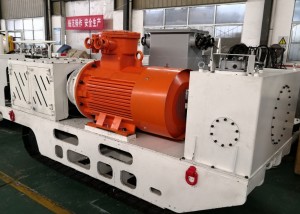In the world of industrial motors, understanding the relationship between supply voltage and motor current is crucial for optimizing performance, ensuring efficiency, and preventing potential damage. For businesses involved in the import and export of industrial motors, this knowledge is not just technical—it’s a competitive advantage.
The Basics: Voltage and Current in Motors
Electric motors operate based on the principles of electromagnetism, where voltage (V) and current (I) are two fundamental electrical parameters. The supply voltage is the electrical potential provided to the motor, while the current is the flow of electricity that enables the motor to produce mechanical power. These two factors are intrinsically linked, and changes in one can significantly impact the other.
How Supply Voltage Affects Motor Current
1.Direct Proportionality in Ideal Conditions
In an ideal scenario, according to Ohm’s Law (V = I × R), the current in a motor is directly proportional to the voltage when the resistance (R) remains constant. This means that if the supply voltage increases, the current drawn by the motor will also increase, assuming the motor’s load and resistance stay the same.
2.Real-World Motor Behavior
In real-world applications, motors are not purely resistive loads. They are inductive loads with complex impedance, which means the relationship between voltage and current is influenced by factors such as motor design, load conditions, and power factor. However, the general principle still holds: higher voltage typically leads to higher current, especially if the motor is under heavy load.
3.Under-Voltage and Over-Voltage Scenarios
Under-Voltage: When the supply voltage is lower than the motor’s rated voltage, the motor may draw higher current to compensate for the reduced voltage and maintain the required power output. This can lead to overheating, reduced efficiency, and potential motor failure.
Over-Voltage: Conversely, if the supply voltage is too high, the motor may draw less current initially, but the increased voltage can cause excessive stress on the motor’s insulation and windings, leading to long-term damage.
- Impact on Motor Performance
Efficiency: Operating a motor at its rated voltage ensures optimal efficiency. Deviations from the rated voltage can result in energy losses and reduced performance.
Torque and Speed: Voltage fluctuations can affect the motor’s torque and speed characteristics. For example, under-voltage can reduce torque, making it harder for the motor to start or handle heavy loads.
Heat Generation: Excessive current due to incorrect voltage can cause the motor to overheat, shortening its lifespan and increasing maintenance costs.
Post time: Mar-05-2025


